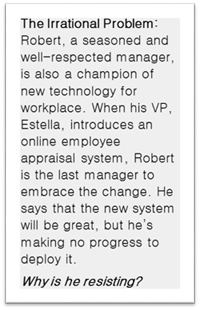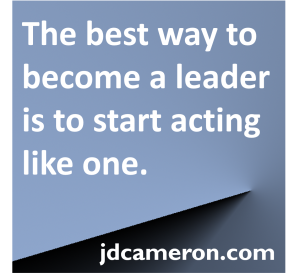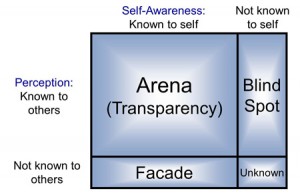3 Steps to Silence Your Inner Critic
Let’s be honest. Ever since you were a baby, there’s been a little voice inside your head offering advice, encouragement, and justification for your actions. That same voice can also be a tough inner critic, offering judgments, doubt, and discouragement. The dialogue in your head is called “self-talk”. It’s a normal mental process that occurs every waking moment for all 7.4 billion people on our intimate planet.
Performance anxiety in musicians and actors , often called stage fright, happens when their inner monologue has convinced them that failure is imminent. Even mega stars like Adele struggle with stage fright. Negative self-talk isn’t just in their minds: Fredrikson & Gunnersson (1992) documented real physical impacts from stage fright, including changes in heart rate, adrenaline, visual acuity, and dry mouth.
Professional athletes use positive self-talk to stay at the top of their game. When their thoughts go negative, like “I can’t make this putt” or “I always miss these outside shots”, their performance falls. Van Raalte, Brewer, et al (1994) studied 24 junior tennis players and concluded that negative self-talk was associated with losing. Conversely, players using positive self-talk won more points than players who did not. Furthermore, athletic success came from “motivational self-talk”, not “instructional self-talk” used to improve technique.
Positive self-talk is very powerful, as it builds our self-esteem, confidence, and convictions. Negative self-talk is also very powerful, building a lack of confidence, low self-esteem, even depression. The good news is that most people can learn how to turn their self-talk into a positive inner coach.
I’ll offer three easy steps to improve your self-talk:
- Record: Become more aware of your self-talk
- Restate: Fix your persistent negative themes
- Reprogram: Change your self-talk to a more healthy voice
How do you record your self-talk? Just listen to your inner voice, especially in those moments before you take action. Consider using a “thought record” and write down the situation, what you are feeling, and what you are thinking. Look for any evidence of “crooked thinking” (e.g. catastrophizing, overgeneralizing, exaggerating, predicting the future, black and white thinking, personalizing).
Now it’s time to restate the words that are beating you down. Review your thought list to identify persistent negative themes. Look for repeated crooked thinking. Consider whether your self-talk is tied to specific situations. The goal is to identify just one or two repeating negative themes that you can tackle and be successful.
How do you reprogram your self-talk? The moment you realize that unhealthy self-talk has crept in from a dark place in your mind, flip the light switch on and play a new healthy restatement back in your head (even out-loud if you can). Let me offer a few examples:
| If negative Self-Talk says… | Reprogram using Positive Self-Talk… |
|---|---|
| I’ll never do this right. | I always do this right. |
| I always fail at this. | I always succeed at this. |
| I’m no good at this. | I’m better than this. |
| That’s just like me (when you do something poorly). | That’s not like me (when you do something poorly). |
| That’s not like me (when you do something well). | That’s just like me (when you do something well). |
Silencing your inner critic by managing positive self-talk is just one technique used in a much broader area of psychology. Cognitive therapy is a treatment approach that helps people to recognize and reexamine their own thoughts so that they can reduce their negative thinking. As you use the techniques, you can get so good at it that even your family, friends, and co-workers will notice a new, positive, more optimistic you.
Is that inner critic all bad? The answer is no. That inner dialogue might be holding you back when you really aren’t prepared to meet a challenge. Your self talk needs to provide a healthy balance between positive and cautious insight. Too much positive talk can lead to an inflated ego and no filter on what comes out of one’s mouth. Becoming more aware of your self-talk, and managing it to find a healthy, positive balance is the key.
References:
The relationship between observable self-talk and competitive junior tennis players’ match performances. Van Raalte, Judy L.; Brewer, Britton W.; Rivera, Patricia M.; Petitpas, Albert J. Journal of Sport & Exercise Psychology, Vol 16(4), Dec 1994, 400-415






 But at other times, resistance persists without explanation. Understanding what that is and why it happens is exactly why you should keep reading this blog article.
But at other times, resistance persists without explanation. Understanding what that is and why it happens is exactly why you should keep reading this blog article.
 Kegan and Lahey suggests that the key is to undercover “the big assumption” – the personal worldview that interprets everything we see, leading occasionally to generating a competing commitment. They prefer a two or three hour one-on-one conversation that is probably best done by a psychologist. However, the also offer a four column paper exercise to guide a shorter conversation. In a nutshell, column one captures the statement about the genuinely held commitment. Column two identifies what is done that works against that commitment. Column three identifies the competing commitment that generates column two. And column four captures “the big assumption”.
Kegan and Lahey suggests that the key is to undercover “the big assumption” – the personal worldview that interprets everything we see, leading occasionally to generating a competing commitment. They prefer a two or three hour one-on-one conversation that is probably best done by a psychologist. However, the also offer a four column paper exercise to guide a shorter conversation. In a nutshell, column one captures the statement about the genuinely held commitment. Column two identifies what is done that works against that commitment. Column three identifies the competing commitment that generates column two. And column four captures “the big assumption”.



